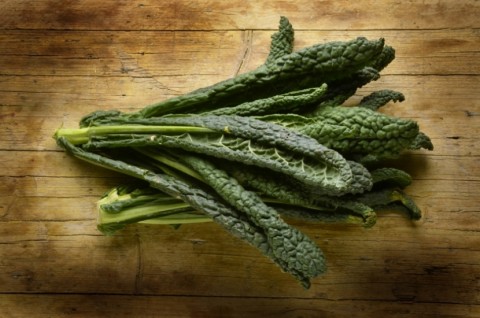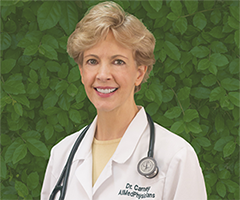DrCarney.com Blog
But Doctor, Do I HAVE to Eat Kale?
The environmental movement isn't the only one to advocate "going green;" physicians, nutritionist, and medical researchers are all trumpeting the benefits of "going green" at mealtimes, and kale seems to be the focus of all the buzz. But just exactly how much kale should we be eating? And how much kale do those physicians, nutritionists, and researchers think we can really stand? Is kale necessary for good health?
Kale has been a darling of the nutrition community because it is rich in nutrients like Vitamins A, C, and K. It also has a wealth of minerals and phytonutrients plus the benefits of fiber. But eating kale isn't the only way obtain the goodness of leafy green foods. Below is a list of foods that are also considered "dark, leafy greens." While there are variations in vitamin and mineral content, each of these veggies will give you the heart healthy advantage of greens.
Alternatives to Kale
- Broccoli
- Cauliflower
- Bok-choy
- Swiss chard
- Kale
- Collards
- Beets and beet greens
- Mustard greens
- Turnip greens
- Lettuce
- Cabbage
- Brussels sprouts
- Cilantro
- Parsley
- Spinach
- Arugula
Why Dark Green Leafy Vegetables?
We should plan on eating at least two servings a day of dark green, leafy vegetables to maintain optimal health. If, however, we are battling to recover cardiovascular health, we may need more. After a heart attack or stroke, Dr. Caldwell Esselstyn, Jr., recommends eating greens six times a day. I agree with Dr. Esselstyn that more than two servings of greens per day may be important for regaining health. In fact, I believe greens are good for battling any disease process due to the effect greens have on our circulatory system.
Eating greens produces the "magic gas" nitric oxide. When we're born, the endothelial cells lining our blood vessels produce this gas in sufficient quantities to keep our blood flowing smoothly through our arteries and to ensure our arteries are able to expand to meet the demands for increased blood volume when our activity level changes. But after years of consuming the standard Western diet of eggs, meat, dairy, oil, and processed foods, our endothelial cells are no longer able to produce sufficient nitric oxide and our arteries have become damaged with atherosclerotic plaques. Poor circulation and increased risk of many diseases results. Greens help heal our arteries, allowing oxygenated-blood rich with nutrients to flow past our cells, renewing cell vitality and removing old waste products.
Who Decided Kale was King?
You may have a seen a chart floating around social media indicating that vegetables like kale and broccoli "have more protein" than sirloin steak. Kale is good for you, but it doesn't have more protein per 100 calories than steak--nor should it. Our national obsession with protein is misguided, as I explain in my article, Current Protein Recommendations Flawed. But to set the record straight on the nutritional comparison with kale, Jeff Novick, MS, RD, offers a chart you can trust. However, the misleading internet meme that falsely compares kale to steak just demonstrates the almost mythical qualities that have been conferred on kale and other greens.
Why do we believe kale is so good for us? Kale comes out high on a number of scales, but not all of them. There are different ways to measure exactly how a vegetable is "beneficial." As an example, Dr. Michael Greger offers one type of comparison. He looked at the nitrates in vegetables, and found arugula to be the top choice; kale didn't even make it into the top ten. But Jeff Novick points out that if we're comparing nitrate content, iceberg lettuce stacks up well against kale.
Here's my truth: I buy iceberg lettuce less than once a year; I buy kale about once a week. If nitrates were my only concern, it might be the other way around. But we shouldn't make our nutrition choices based on one isolated nutrient when nature offers so many ways to get sufficient nitrates. Dr. Joel Fuhrman has developed the ANDI score that can help us see which foods offer the biggest nutritional bang for our bite. The ANDI score measures the number of nutrients per calorie in different foods. Kale, collard greens, mustard greens, and watercress top the vegetable list.
Cross Over to Cruciferous
Kale--like the other members of the ANDI top four--packs a power punch because it's a cruciferous vegetable. Cruciferous veggies are full of phytochemicals that put the "phyt-" in cancer-fighting! Named for the cross-shaped arrangement of their four-petalled flowers, cruciferous vegetables contain isothiocyanates, phytochemicals which research has demonstrated can:
1. prevent carcinogens from being activated,
2. neutralize the toxic effect of carcinogens that have already been activated,
3. and speed up the removal of carcinogens from the body.
And like other veggies in the cruciferous family, kale contains the isothiocyanate sulforaphane which combats macular degeneration in addition to battling breast cancer. I could continue listing micronutrients and how this family of veggies optimizes our health, but focusing on the individual chemical components distracts us from nature's wisdom. Kale comes packaged by design with a myriad of nutrients synergistically combined to optimize our health. So, sure, eat kale for the amazing effect the nitrates have on our circulatory system. Or eat it for the cancer-fighting phytochemicals it has in abundance. Or eat it for the carotenoids that give our skin a healthy glow. Or just eat it because kale is one of nature's gifts to keep our bodies strong, beautiful, and disease resistant. But what if you tell me, "Doctor, I just don't like kale . . . ."
Go Green Your Way
After he won the election, George H. Bush declared that he disliked broccoli and no longer wished to eat it. Now that he was president, his plate was going to be a broccoli-free zone. To tell the truth, I don't much enjoy broccoli either! Maybe that's how you feel about kale. No problem. We don't have to eat kale to optimize our health. But, every day we should "go green" by including at least two servings from that long list of dark, leafy green vegetables.
For additional information:
(1) Green Leafy Vegetables Reduce Glaucoma Risk
(2) Cruciferous Vegetables Protect Against Cancer
(3) Cancer Alert: Your Best Defense - Go Cruciferous
Scroll Down Page to Leave Comments

Starch-Smart Social Networking
Join our Online Support Community at DrCarney.com/community featuring Starch-Smart Discussions, Blogs and more by signing up for a free membership to Dr. Carney's Community.
Preview the "Perfect Health Requires Perfect Circulation" Trailer
Blood Flow Boosts Vitality: Do factors that affect artery linings create or ease your aches and pains? Explore the link between impaired circulation and health challenges. How does blood flow relate to health troubles? Learn how Dr. Carney's science-based Starch-Smart® System can improve your circulation and overall health by nourishing endothelial cells at the start of your day.
When you subscribe to the blog, we will send you an e-mail when there are new updates on the site so you wouldn't miss them.




